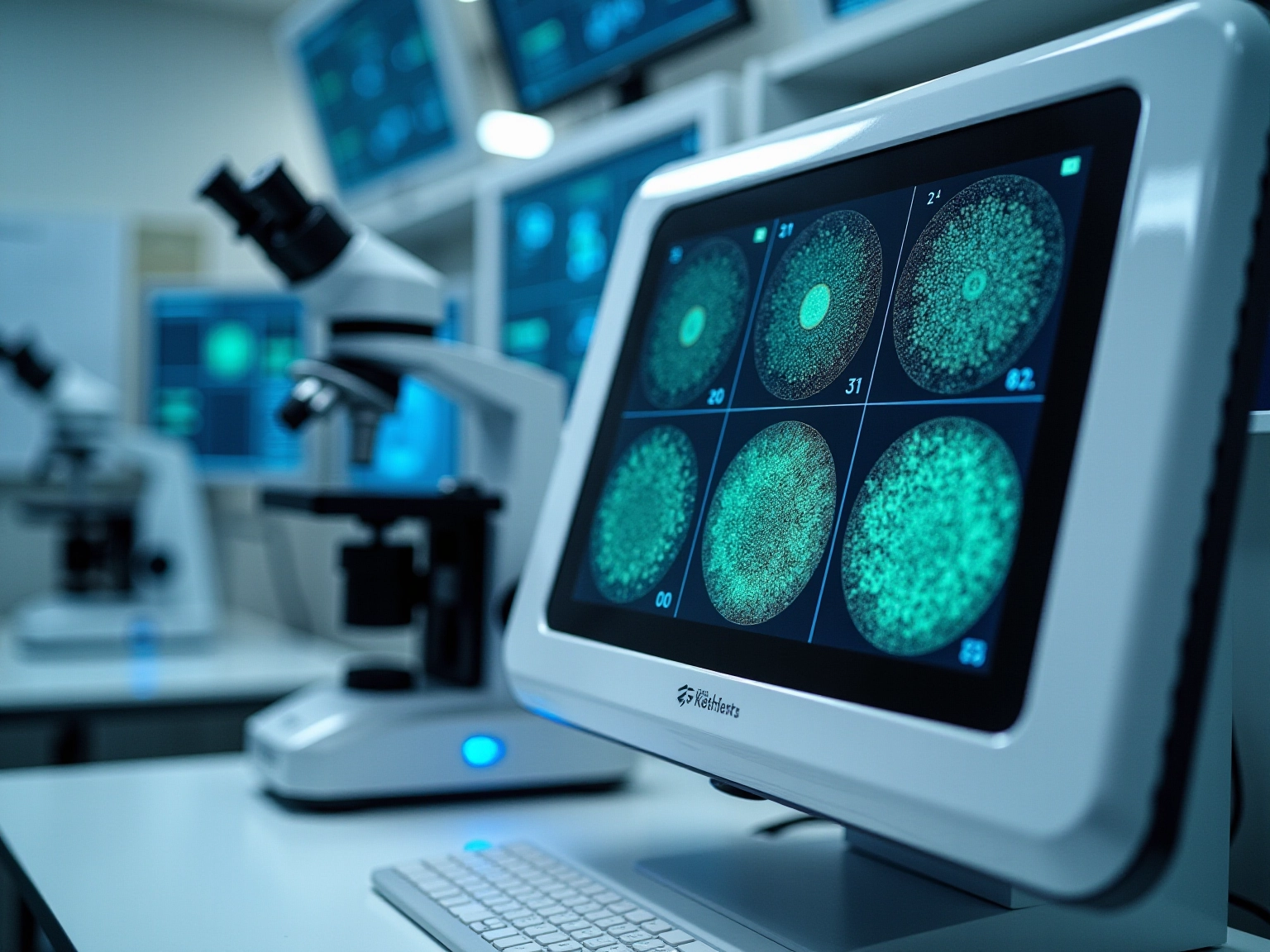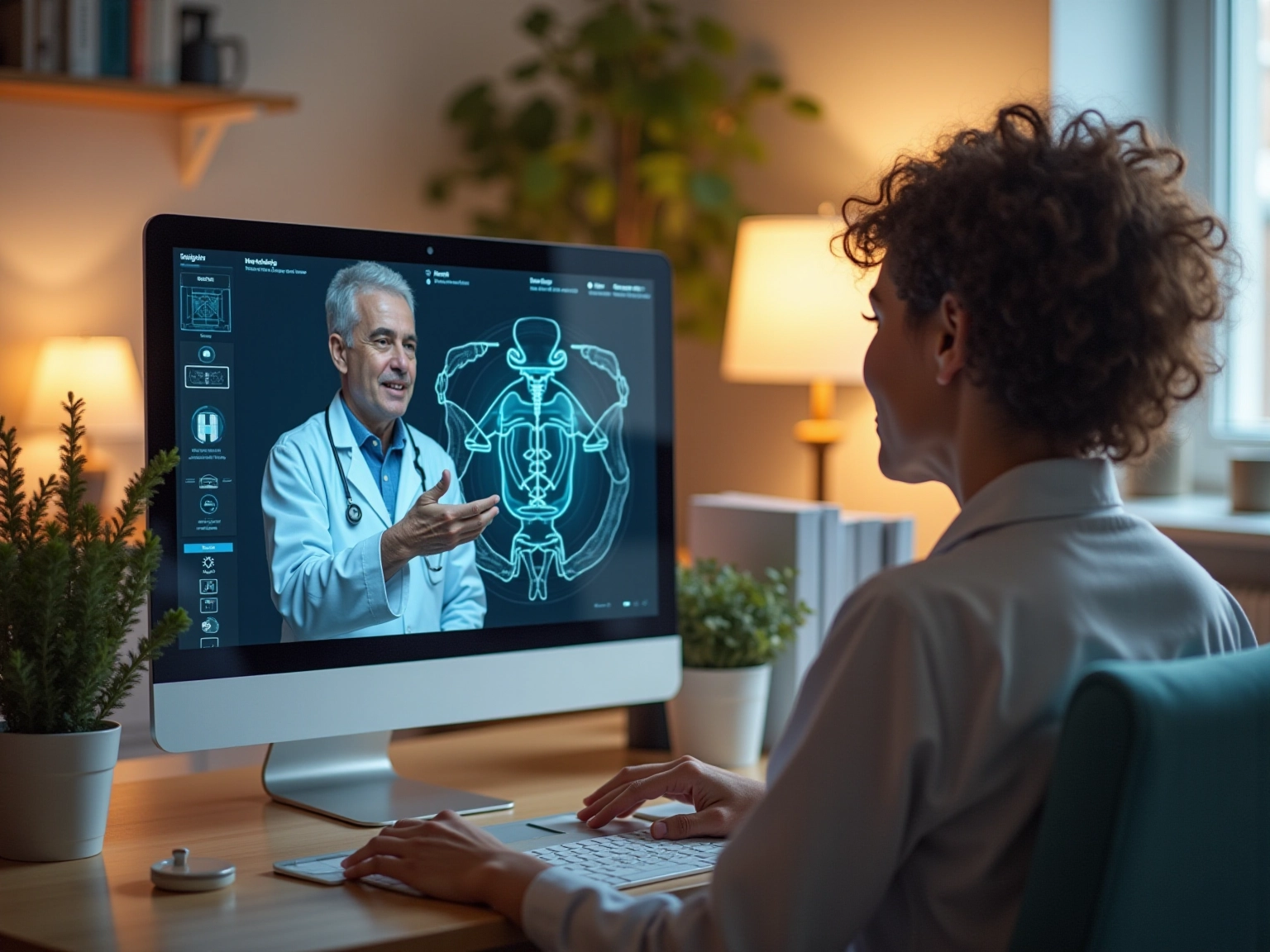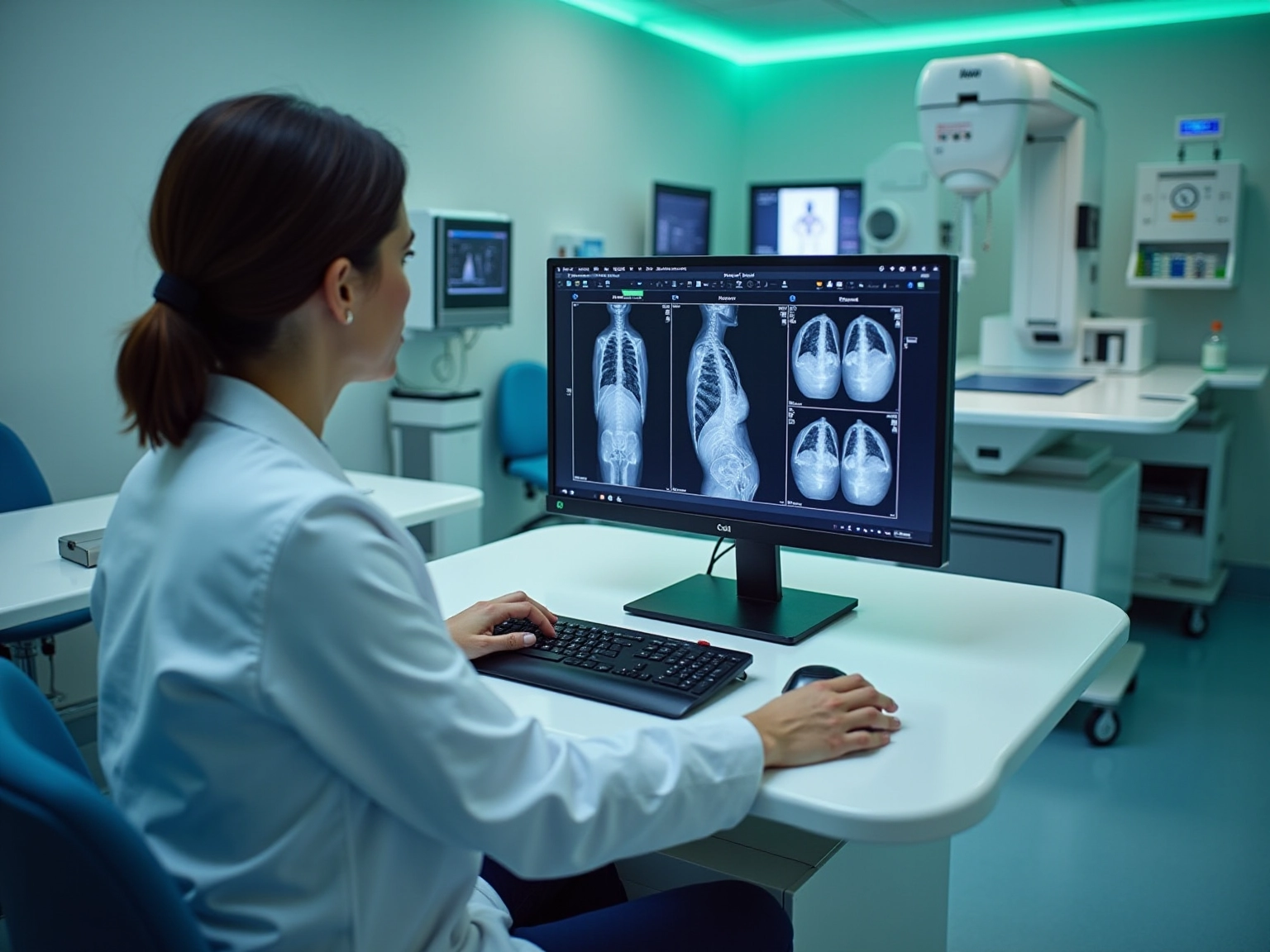
This article delves into ten transformative examples of artificial intelligence in medicine that are redefining patient care. Key advancements include improved diagnostic accuracy, personalized treatment plans, and enhanced imaging analysis. Innovations such as AI-driven tools for HCC coding and early cancer detection are at the forefront of these changes. By automating processes and streamlining workflows, these technologies significantly enhance operational efficiency and patient outcomes. The critical role of AI in modern healthcare is underscored by its ability to provide precise diagnostics, ultimately leading to better patient care.
In the rapidly evolving landscape of healthcare, artificial intelligence is emerging as a transformative force that reshapes how medical professionals approach diagnostics, patient care, and operational efficiency. By automating complex coding processes and enhancing diagnostic accuracy through advanced imaging analysis, innovative AI solutions streamline workflows and significantly improve patient outcomes across various specialties.
This article delves into the remarkable advancements brought forth by leading AI technologies, underscoring their profound impact on healthcare practices and the potential benefits for both providers and patients. As the integration of AI continues to gain momentum, understanding these developments becomes crucial for healthcare organizations that aspire to enhance their services and maintain a competitive edge.
Inferscience’s HCC Assistant harnesses the power of artificial intelligence examples in medicine to automate the collection and analysis of clinical data, delivering real-time coding suggestions directly at the point of care. This innovative approach significantly alleviates the administrative burden on medical providers, leading to a remarkable 50% reduction in coding errors and compliance risks—helping to prevent costly audit penalties.
By streamlining workflows through advanced NLP tools that consolidate individual data, the HCC Assistant not only improves coding accuracy but also ensures that providers optimize their funding from Medicare Advantage contracts. As David Short aptly states, “AI-driven automation is no longer optional—it’s a competitive necessity.”
This focus on efficiency enables medical professionals to devote more time to patient care while simultaneously enhancing Risk Adjustment Factor (RAF) scores. Consequently, medical organizations experience better financial outcomes, reinforcing the critical role that artificial intelligence examples in medicine play in transforming coding practices.

Inferscience’s HCC Assistant leverages advanced artificial intelligence and natural language processing (NLP) to revolutionize risk adjustment in the medical field. By streamlining HCC coding workflows, this intelligent tool eliminates nearly all manual effort, empowering medical providers to ingest, analyze, and unify both structured and unstructured patient data within their electronic health records (EHRs). This capability not only enhances the accuracy of HCC coding but also ensures that overlooked health diagnoses are identified, ultimately elevating risk adjustment factor (RAF) scores and optimizing funding from Medicare Advantage agreements, which are key artificial intelligence examples in medicine.
As medical organizations face increasing pressure to improve operational efficiency, the integration of AI tools like Inferscience’s HCC Assistant becomes essential. The tool’s capacity to continuously learn from new data guarantees that its recommendations remain current and evidence-based, empowering healthcare professionals in their decision-making processes.
Case studies demonstrate how artificial intelligence examples in medicine can enhance HCC coding documentation, leading to improved patient outcomes and allowing providers to focus more on patient support. This transformation in HCC coding workflows not only boosts efficiency but also enhances the overall quality of care, making it a crucial consideration for CFOs evaluating investments in AI solutions.
Google Health AI leverages advanced imaging analysis techniques to significantly enhance disease detection rates. By employing deep learning algorithms, this technology analyzes medical images with remarkable precision, enabling the identification of early signs of conditions such as cancer that might elude human detection. This not only boosts diagnostic accuracy but also streamlines the interpretation process for radiologists, resulting in quicker treatment decisions.
The incorporation of artificial intelligence examples in medicine into imaging processes illustrates a crucial change in medical practice, enabling early intervention and ultimately enhancing patient outcomes. Notably, the accuracy rate of 93% in heart disease classification is one of the remarkable artificial intelligence examples in medicine, underscoring its potential to revolutionize diagnostic practices.
Furthermore, the COVID-19 pandemic has catalyzed a more than 200% increase in demand for medical imaging services, particularly for respiratory conditions. This surge has intensified the need for efficient AI-based tools, which can alleviate the workload on radiologists and enhance operational efficiency for medical organizations.
Inferscience’s AI solutions further enhance these capabilities by integrating electronic health records (EHR) to improve HCC coding and provide clinical insights, ultimately driving advancements in medical care.
As Rudradeb Mitra, CEO of Omdena, states, “This not only enhances outcomes for individuals but also makes medical services more accessible to everyone and reduces the strain on medical systems by preventing the advancement of illnesses to more severe stages, which are often more challenging and costly to manage.”
As medical services continue to progress, artificial intelligence examples in medicine, particularly in deep learning, are poised to play a vital role in improving the quality and accessibility of care. Reports from IDTechEx further highlight the transformative potential of these innovations, offering valuable insights for CFOs aiming to comprehend the financial implications of AI integration in healthcare.
Aidoc’s AI-powered solutions revolutionize radiology by automatically prioritizing critical cases based on urgency. In an era where timely diagnoses are paramount, Aidoc addresses the pressing challenge of missed important medical events (IPEs). By conducting real-time analysis of medical images, Aidoc effectively flags potential life-threatening conditions, enabling radiologists to concentrate on the most pressing cases first. This innovative method not only accelerates the diagnostic process but also significantly improves outcomes for individuals through timely interventions.
Recent studies indicate that AI assistance has led to a notable reduction in missed IPEs by approximately 30%, underscoring the technology’s effectiveness in enhancing clinical workflows. As Kiran Batra from the Department of Radiology at the University of Texas Southwestern Medical Center notes, ‘The authors declare that there are no disclosures relevant to the subject matter of this article.’
With the demand for rapid and accurate diagnoses on the rise, Aidoc exemplifies how AI can transform radiology practices, making them more efficient and responsive to individuals’ needs. Future research is recommended to evaluate the significance of diagnosing and treating small incidental emboli in individuals, emphasizing the continuous progress in AI prioritization. Insights from the case study ‘Future Directions for AI in Radiology‘ reveal that the future of radiology appears bright, paving the way for enhanced well-being and outcomes.

Zebra Medical Vision harnesses advanced AI algorithms to analyze medical images, delivering actionable insights that empower healthcare providers. The challenge faced by radiologists is the increasing volume of cases and the need for swift, accurate diagnoses. By automating the detection of various conditions, Zebra’s tools significantly enhance the speed and accuracy with which radiologists identify abnormalities. This technological innovation not only boosts diagnostic precision but also alleviates the workload on radiologists, enabling them to concentrate on more complex cases that necessitate human expertise. The integration of Zebra’s AI tools into radiology workflows exemplifies the potential of artificial intelligence to revolutionize patient care and improve health outcomes.
Recent trends indicate that the generative AI in medicine market is projected to reach approximately USD 45,819.11 million by 2034, underscoring the growing demand for such technologies. Furthermore, key applications of medical AI are expected to generate annual savings of $150 billion for the U.S. medical economy by 2026, highlighting the financial benefits alongside clinical improvements. This data signals a significant opportunity for healthcare organizations to adopt AI solutions that not only enhance operational efficiency but also improve patient outcomes.
A pertinent case study from UW Health demonstrates the practical advantages of AI in medical environments. Since the onset of the COVID pandemic, UW Health has experienced a 57% increase in incoming electronic messages to providers. To address this, they are piloting a generative AI tool that converts incoming messages into editable drafts. Frank Liao, PhD, director of AI at UW Health, noted, “Since the start of the COVID pandemic, the number of incoming electronic messages to our providers has increased by 57%. [So we’re piloting] a generative AI tool that turns incoming messages into editable drafts. This helps providers save time while also getting them past blank screen syndrome.”
Zebra Medical Vision’s dedication to improving diagnostic abilities via AI signifies a major progress in medical imaging and establishes it as a leader in the continuous development of medical solutions. The combination of advanced technology and a commitment to enhancing healthcare delivery positions Zebra Medical Vision at the forefront of a transformative era in medicine.
PathAI harnesses the power of artificial intelligence to significantly enhance the accuracy of pathology diagnostics. By meticulously analyzing digitized pathology slides, PathAI’s sophisticated algorithms can detect intricate patterns and anomalies indicative of various diseases. This cutting-edge innovation not only enhances diagnostic accuracy but also streamlines the workflow for pathologists, allowing them to manage a larger number of cases with greater efficiency.
For instance, the PANNORAMIC series from 3DHISTECH can handle up to 200,000 slides each year, showcasing various artificial intelligence examples in medicine that demonstrate the transformative potential of AI in pathology practices. The incorporation of AI into pathology exemplifies a broader trend in medical services, where advancements serve as a crucial partner for professionals striving to provide precise and prompt diagnoses.
Current advancements in AI applications are paving the way for enhanced diagnostic accuracy, with ongoing research underscoring the necessity of developing robust AI models that assist pathologists in making informed decisions. As Dr. Matthew Lungren, an assistant professor of radiology at Stanford, observes, the ability of AI to assess various pathologies simultaneously through a single algorithm represents a significant advancement in diagnostic methods.
Moreover, the use of AI in pathology has been linked to considerable cost savings, particularly in prostate cancer evaluations, further emphasizing the financial advantages of embracing such innovations. Real-world applications, including artificial intelligence examples in medicine like those demonstrated by PathAI, illustrate the tangible benefits of these technologies.
By optimizing workflows and boosting diagnostic precision, AI not only enhances the efficiency of pathology practices but also leads to superior outcomes for patients, reinforcing the vital role of technology in contemporary medical services. This integration ultimately results in improved operational efficiency, making a compelling case for CFOs to consider AI solutions in their financial strategies.

Babylon Health is revolutionizing virtual medical consultations by utilizing artificial intelligence examples in medicine, enabling individuals to receive medical guidance and support from the comfort of their homes. The AI-driven platform serves as one of the artificial intelligence examples in medicine by effectively evaluating symptoms and offering tailored treatment suggestions, significantly streamlining the consultation process. This innovative technology not only enhances individual access to healthcare services but also alleviates the workload on healthcare providers by automating routine inquiries.
By 2025, AI applications in telemedicine are projected to enhance client consultations, with studies indicating that AI could increase access to services by as much as 30%. Real-world implementations, such as those by Babylon Health, underscore the efficacy of artificial intelligence examples in medicine for delivering timely medical advice, which ultimately results in improved health outcomes. Patients have reported high satisfaction rates with AI-driven consultations, commending the convenience and efficiency of receiving assistance without the necessity of travel.
Furthermore, Inferscience’s HCC Assistant is one of the artificial intelligence examples in medicine that exemplifies the transformative potential of AI in HCC coding workflows, leveraging advanced natural language processing to eliminate manual efforts and enhance risk adjustment. This tool empowers medical providers to ingest, analyze, and unify patient data, ensuring they receive optimal funding from Medicare Advantage contracts while enabling a greater focus on patient care. Inferscience’s solutions aim to deliver both efficiency and compliance, aligning with the overarching theme of AI enhancing medical services.
Notably, the use of artificial intelligence examples in medicine is expected to reduce drug production costs by over $70 billion by 2028, illustrating its capacity to reshape the medical landscape. As Paul Sun, President and CEO of IronYun, articulates, “Thanks to advances in AI, telehealth is becoming more widely available and affordable, making it easier for people to get the care they need without having to travel long distances.”
Moreover, predictive analytics for disease prevention showcases various artificial intelligence examples in medicine, reinforcing the emphasis on Babylon Health and highlighting the extensive influence of AI on client consultations. As AI continues to advance, its impact on client consultations is anticipated to grow, rendering healthcare more accessible and efficient for all.

CureMetrix addresses a critical issue in women’s health: the need for improved precision in mammography readings. By employing advanced AI methods, CureMetrix’s algorithms meticulously analyze mammograms, pinpointing potential areas of concern. This empowers radiologists to make more informed diagnostic decisions, significantly enhancing breast cancer detection rates while reducing false positives. Consequently, individuals face fewer unnecessary follow-up procedures. Notably, recent studies reveal a decline in the percentage of women with node-negative invasive cancers, dropping from 85.5% to 70.2% following the adoption of AI-driven methods, underscoring the effectiveness of these advancements in improving health outcomes.
CureMetrix’s commitment to integrating artificial intelligence examples in medicine into women’s health diagnostics exemplifies the transformative potential of technology in enhancing diagnostic precision and patient care. The ongoing evaluation of AI’s role in mammography screening emphasizes the importance of controlled implementation and continuous performance assessment. This approach ensures that the benefits of AI are maximized while addressing challenges such as data drift and quality assurance. As highlighted by the Swedish Research Council, “Our study suggests that AI in the study setting has potential for controlled implementation, which would include risk management and real-world follow-up of performance.”
Furthermore, future studies are planned to assess screening sensitivity, specificity, and interval cancer rates, with comprehensive follow-up data anticipated by November 2024. As the field progresses, CureMetrix remains at the forefront, illustrating artificial intelligence examples in medicine that can revolutionize breast cancer detection and ultimately enhance outcomes for individuals.

Tempus harnesses the power of artificial intelligence to develop customized treatment plans tailored to individual health data. By thoroughly analyzing genomic and clinical information, Tempus’s AI algorithms identify the most effective treatment options, particularly in oncology. This personalized approach not only leads to improved treatment outcomes but also significantly enhances the experience of individuals by offering tailored support.
The impact of artificial intelligence examples in medicine on precision medicine is profound, with forecasts indicating that by 2025, these AI-driven techniques will revolutionize healthcare through more precise diagnostics and targeted therapies. For instance, Tempus’s AI capabilities have been instrumental in formulating treatment strategies that adapt to the unique genetic profiles of patients, thereby increasing the likelihood of successful interventions. Recent statistics reveal that individuals utilizing AI-driven treatment plans have shown a 30% improvement in overall treatment outcomes compared to traditional methods.
Real-world applications serve as artificial intelligence examples in medicine, demonstrating the efficacy of Tempus’s AI in precision medicine. Various case studies, including those featured in the report on Emerging Technologies in AI Precision Medicine, indicate that patients have experienced significant enhancements in their treatment journeys, highlighting the critical nature of personalized care. As the healthcare landscape continues to evolve, the integration of artificial intelligence examples in medicine, especially in genomic data analysis, emerges as a pivotal trend, propelling advancements in personalized medicine and ultimately transforming healthcare delivery. As noted by a Senior Manager at Advanced Technology Corporation, “The advancements in AI are crucial for understanding the direction of R&D and marketing in precision medicine.” This insight underscores the vital role of AI in shaping the future of healthcare.
Freenome leverages AI-enhanced blood testing to revolutionize early cancer detection. The challenge of late diagnosis remains a significant concern in healthcare, but by harnessing multiomics data from blood samples, Freenome’s sophisticated algorithms can pinpoint biomarkers linked to various cancers. This capability facilitates earlier diagnosis and timely intervention, addressing the urgent need for improved detection methods.
This advanced technology not only increases detection rates but also provides individuals with actionable health insights, significantly enhancing their involvement in preventive wellness. A recent case study utilizing an Adaptive Nonlinear AutoRegressive eXogenous Neural Network demonstrated high predictive accuracy in breast cancer risk modeling, underscoring the potential of AI in refining treatment strategies.
As part of a selection process, cases were chosen from an initial ~500 individuals out of a total of ~53,000 tests, highlighting the effectiveness of AI-enhanced blood testing in increasing detection rates. A. Goldsmith notes, ‘The integration of artificial intelligence examples in medicine, such as in cancer detection, exemplifies its transformative potential, leading to improved patient outcomes and increased survival rates.’
As of 2025, advancements in artificial intelligence examples in medicine are reshaping the landscape of cancer detection. This underscores the importance of continuous innovation and teamwork in this critical area of healthcare, paving the way for a future where early detection becomes the norm rather than the exception.

The integration of artificial intelligence in healthcare marks a pivotal shift towards enhanced patient care, operational efficiency, and diagnostic accuracy. Leading AI technologies, including Inferscience’s HCC Assistant and Google Health AI, are redefining coding practices and disease detection, respectively, by streamlining workflows and significantly minimizing errors. These advancements not only bolster the efficiency of healthcare providers but also guarantee that patients receive timely and precise diagnoses, ultimately resulting in improved health outcomes.
Moreover, AI applications in radiology, such as those developed by Aidoc and Zebra Medical Vision, are revolutionizing the prioritization of critical cases and the analysis of medical images. By automating routine tasks, these tools empower healthcare professionals to concentrate on more complex cases, thereby elevating the quality of care. Likewise, companies like Tempus and Freenome are pushing the boundaries of personalized medicine and early cancer detection, illustrating the profound impact of AI in customizing treatments to meet individual patient needs.
As the healthcare landscape continues to evolve, the adoption of AI technologies has transitioned from being a luxury to a necessity for organizations aiming to remain competitive and enhance patient services. The anticipated financial benefits, coupled with tangible improvements in patient care, underscore the essential role of AI in the future of healthcare. Embracing these advancements will not only optimize operational efficiencies but also pave the way for a more accessible and effective healthcare system for all.